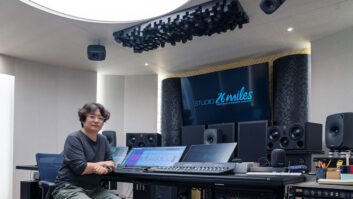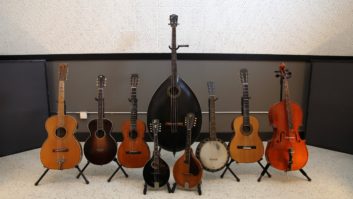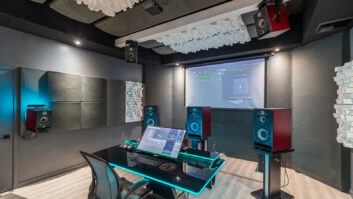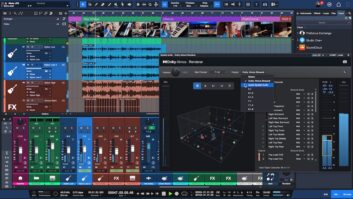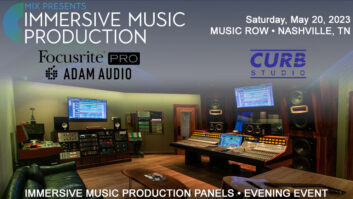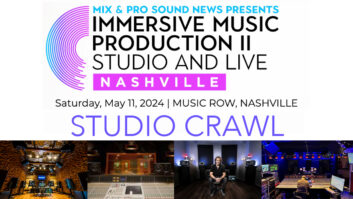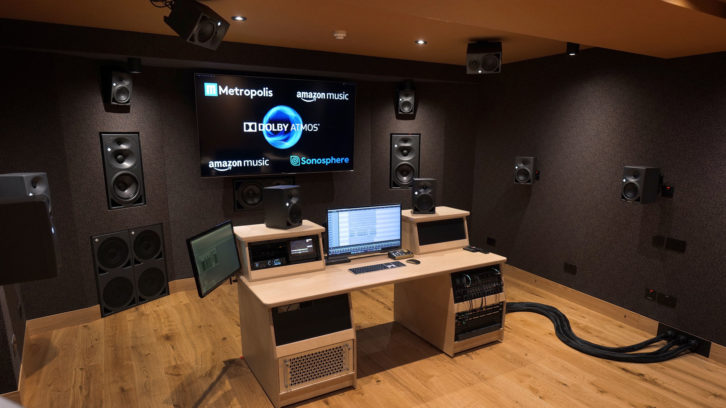
London, UK (July 28, 2020)—Immersive content production company Sonosphere has collaborated with Metropolis Studios to build a Munro Acoustics-designed “hub studio” that accommodates all surround sound formats, up to 11.1.8 Dolby Atmos.
According to Sonosphere mix engineer Phil Wright, “We decided on three loudspeakers across the back wall, with all the loudspeakers around the room arrayed at 30° of separation to each other, so the setup was completely symmetrical for doing third-order [high-order Ambisonic] work. Atmos is more ‘front-centric,’ so one of the rear loudspeakers will not be in use, and two of the others will be electronically adjusted for Dolby using a DAD AX32 monitor controller. The AX32 enables any number of virtual room presets to be optimized for different immersive formats.”
Three Neumann KH 420 tri-amplified monitors are soffit-mounted to the front wall, with one KH 420 horizontal, beneath the video screen. Twin Neumann KH 870 subwoofers flank the three-way monitors. Surround monitoring is handled by 17 Neumann KH 120 compact bi-amplified studio monitors
Herbert Waltl Outfits with Neumann Immersive Speakers
Part of the new “hub studio” approach includes freedom from dependence on any particular mix hardware. “Jamie [Gosney, Sonosphere commercial director] has designed this beautiful DAW workstation that’s on a three-meter umbilical to the wall,” Wright says, “so for a DAW-based workflow, you can sit with Pro Tools, Logic, Reaper or the client’s DAW of choice in the sweet spot in the center of the room. When we have a live job, or a client whose preferred workflow is a mixer, then we take the locks off and wheel the DAW to the side of the room at 90° to the engineer.”
Gosney adds, “One of the other reasons we decided not to put a permanent console in is because there’s been quite a bit of interest from theatre designers — who would bring their own desk in. When we were designing the room, we consulted with a number of live sound engineers, concert system and theatre designers, who, normally, have not been able to set up or program their immersive systems until they are in a rehearsal rooms or a venue. As a result, we’ve focused on creating benchmark acoustics, with a central immersive listening position served by 22 loudspeakers.
Gosney also reports, “There is already a significant order book for the room in terms of record labels, who want well-known catalogue content remixed in Atmos so they can add it to HD streaming services. We are also in talks with a number of live venues, production companies and promoters as the studio can be very easily attached, via fiber, to virtually any venue in the country and used as a live broadcast and streaming hub — thus eliminating the need for production companies to park large OB vehicles outside their venues. We also have the ability to handle soundtracks and post production for the film industry. The possibilities are truly endless.”


